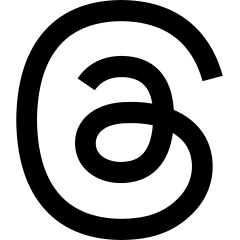
There are many methods or devices that people use to add oxygen to wine to soften it up and bring out the flavours and aromas of the wines. It can be as simple as a decanter. One of the devices which I heard about, called OptiWine, caught my interest. I emailed the company optiwine.fr and asked them for one of their special nano-aeration devices, which fits in the neck of the bottle, and a few weeks later I received one for testing.
What is OptiWine and Nano-Aeration?
Michael Paetzold, an oenologist, winemaker and expert in oeno-techniques with 25 years’ experience, and Olivier Caste, an ardent wine enthusiast and collector, from France, came together in their quest to answers questions, such as:
- How can a wine’s true essence be captured?
- How and when should a bottle be opened to guarantee tasting it at the right temperature?
- What is the best way to reveal the treasure lying dormant in every bottle?
After three years of research, Michael quantified the precise amount of oxygen required to liberate the aromas captive in a bottle of wine and optimize its potential. The result is OptiWine, which looks like a clear plastic cork with 16 vertical sides around the cork. A high quality resin, Surlyn®, with the same transparency and delicacy as crystal but without its fragility was selected. It is shock resistant, scratch proof, completely odorless and offers no molecular interaction, according to the company.
When you open a bottle, the two OptiWine creators note that the wine is exposed to hyper oxygenation, which causes destructive oxidation. Wine exposed to hyper oxygenation is subject to a paradoxical phenomenon: destructive oxidation. They noted that :…We know that above just a few micrograms of O² per liter (10-40 ?g/l) destructive free radical oxidation (100 ?g/l) sets in, as wines in contact with ambient air rapidly assimilate up to 8000 ?g of O²/l. The Optiwine method of nano-aeration allows the controlled introduction of up to 100 times less oxygen…” (http://www.optiwine.fr/nano-aeration/)
When you put the Optiwiner in the wine bottle, there is play around the edges. The top of the Optiwiner is a flat disk, that sits at the mouth of the bottle, but does not provide a seal, like a cork. Similar to Riedel glasses, where there are specifically shaped glass bowls to optimize the experience of different grape varieties or blends, there is similarly differently sized Optiwiners for wines of different ages. An Optiwiner can fit from half bottles to magnums.
- 4 – is meant for red wine up to 4 years old
- 6 – is for red wine between 4-10 years old, and for white and rose wine up to 2 years old
- 8 – is meant for red wine greater than 10 years old, and for white and rose wine more than 2 years old

How To Use an Optiwiner?
After removing the cork, or screwcap, immediately insert the Optiwiner into the neck of the bottle, pressing down firmly. Now, holding the bottle upright from the bottom with one hand, and holding the Optiwiner firmly with the other hand, slowly tilt the bottle from the top, downward to slightly below horizontal, then bring back upright. I timed it to take about 5 seconds to complete one of these “rocking” motions. For a demi bottle, you would do this twice, 3 times for a 750ml bottle, and 5 times for a 1.5 litre (magnum) bottle. Then wait at least 10 minutes before pouring yourself a glass of wine.
Road 13 Peter’s Vineyard Riesling 2013
As part of my BC Riesling Review, I received 2 bottles of Road 13 Peter’s Vineyeard Riesling 2013. OptiWine sent me the 6 Optiwiner, which is meant for this type of wine (The bottle would be about 1.75 years old). Each bottle was chilled then brought out and opened. I immediately placed the Optiwiner in the neck of one bottle, and rocked the bottle 3 times. I left both bottles for 30 minutes, then poured each in a white wine glass and tasted them, making notes on aromas and flavours.

From the “control” wine, which did not use the Optiwiner, I noted that the wine had medium strength aromas of white flowers, citrus, green melon and stone fruit. The wine was off-dry, soft, with silky sweetness. Very light acidic prickle. Medium intensity with flavours of apples, and apricot with a hint of lime and lime rind. Mouth watering acidity on the finish, with citrus and apple flavours. Some hotness on the finish in the back of the throat. I did taste this wine the following day and light petrol did show up on both the nose and palate.
The “Optiwiner” wine, had quite a fruity nose, with citrus, lime, honey and apple, and a hint of petrol. It was off-dry, soft and round, with medium mouth feel. Light acidic prickle. Medium plus intensity with flaovurs of lime skin, pear and stone fruit, with hints of mandarin orange, honey and petrol. You also get apricot showing up on the mid-palate. Mouth watering acidity with lime rind, and stoniness, and honey at the very end. No hotness on the finish.
From this test of the Road 13 Peter’s Vineyard Riesling 2013, the Optiwiner, does appear to positively affect the wine in a relatively short time period. I am impressed as it does seem to allow the wine to bring out more intensity and variety of aroma and flavour.
I look forward to trying the Optiwiner with a red wine between 4-10 years old. Stay tuned for that post.













This looks like a very interesting new wine “gadget”. If you would like help with sales and marketing in the USA please contact me.
I am not a reseller of the Optiwine device. You can contact them through their website.
Hello Marc,
We have been launching Optiwine for three months now, thereby Optiwine is unfortunatly not distributed in the US at this moment.
We are precisely seeking distribution contact, if you do have some for distribution or can help us for the promotion, it would be with pleasure!
Please do not hesitate for further information.
All the best
Oliver Caste
CEO Optiwine